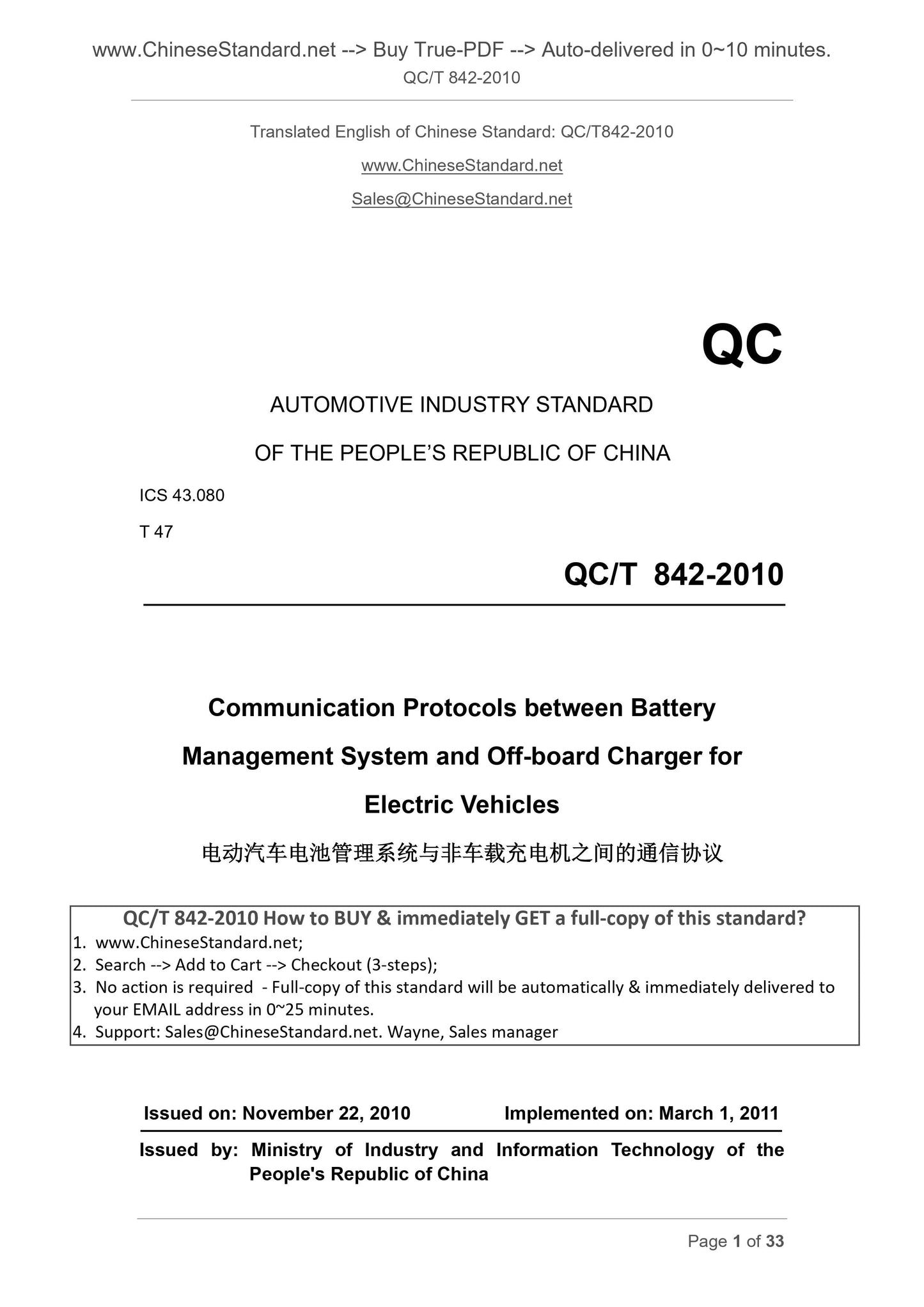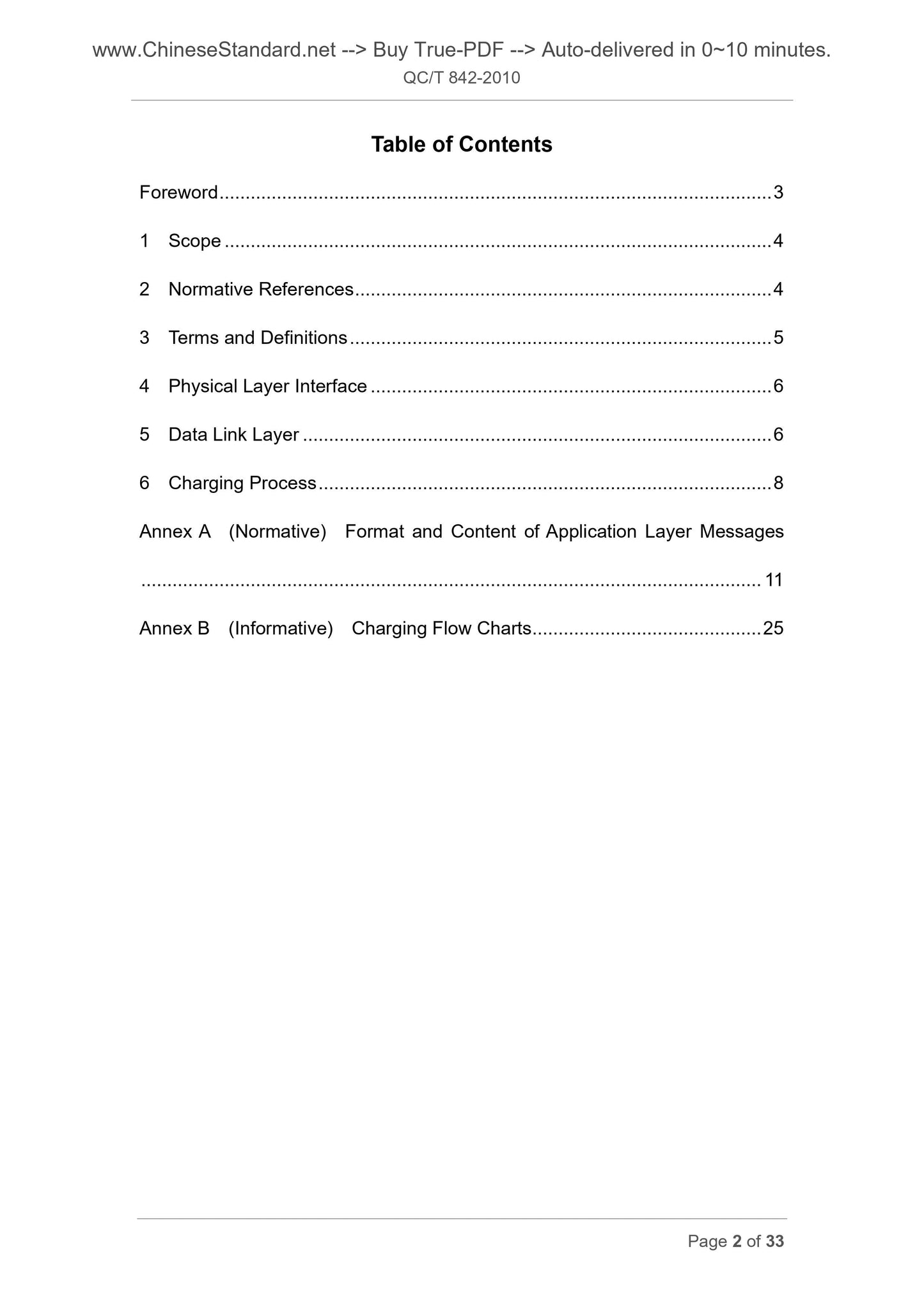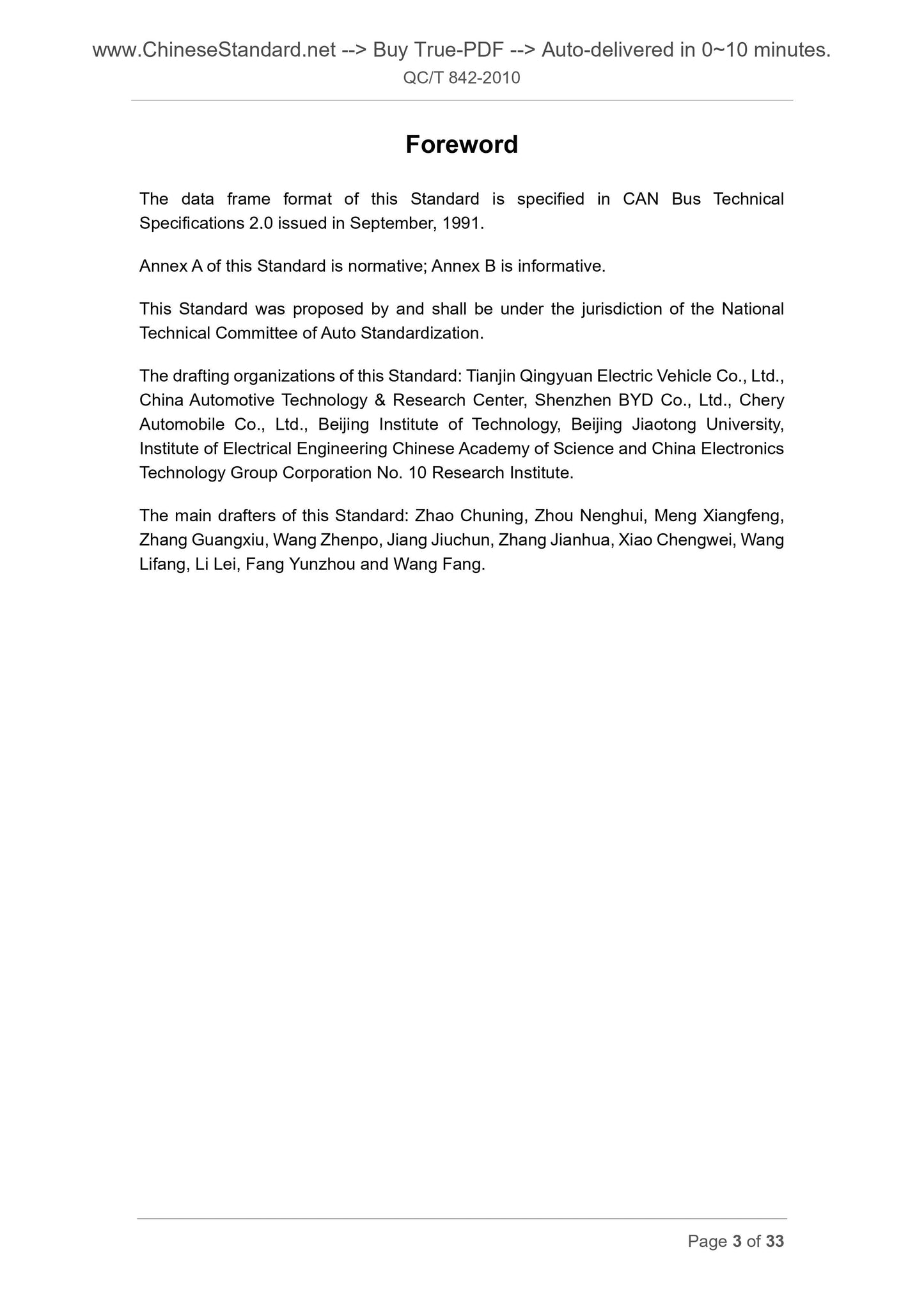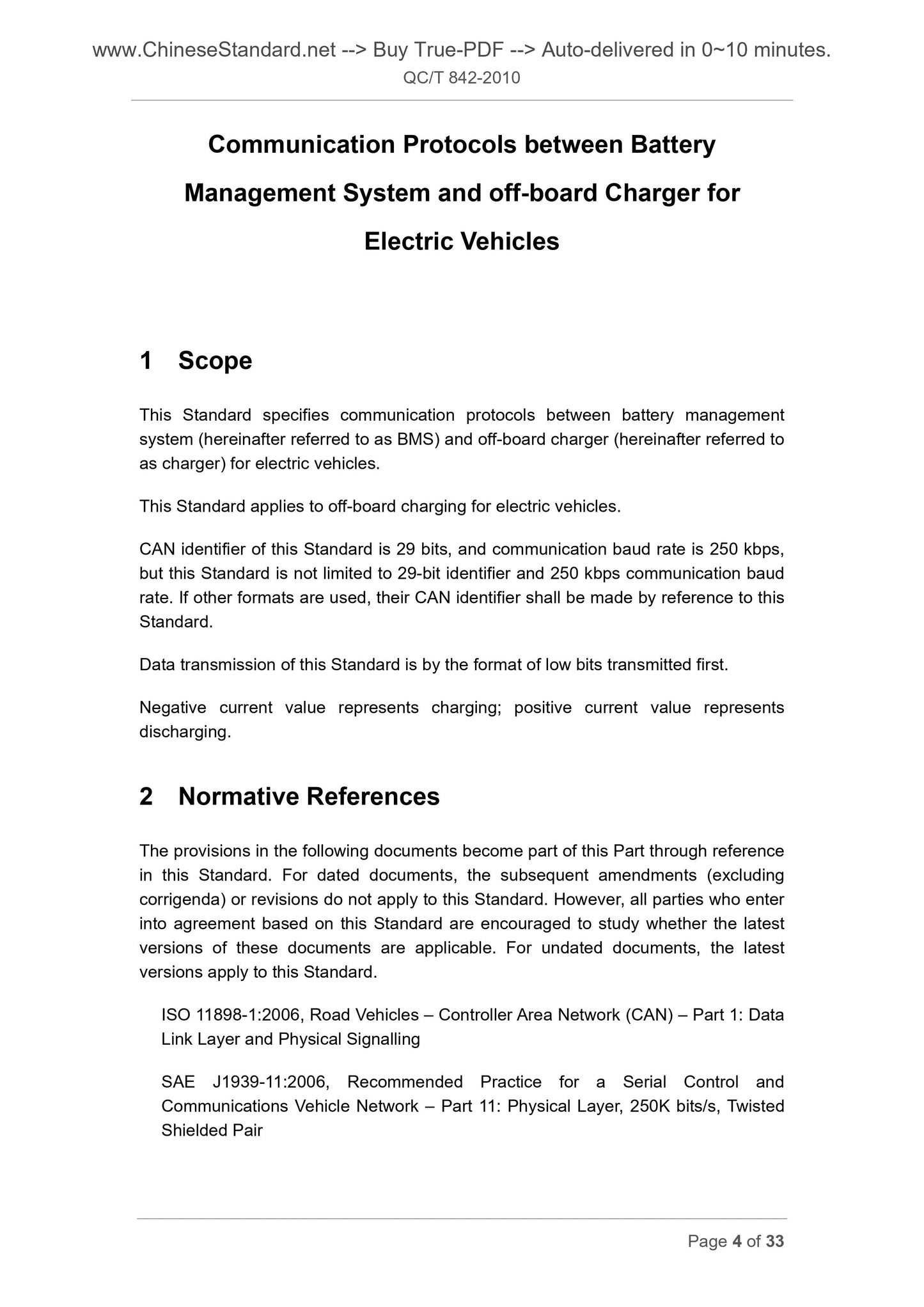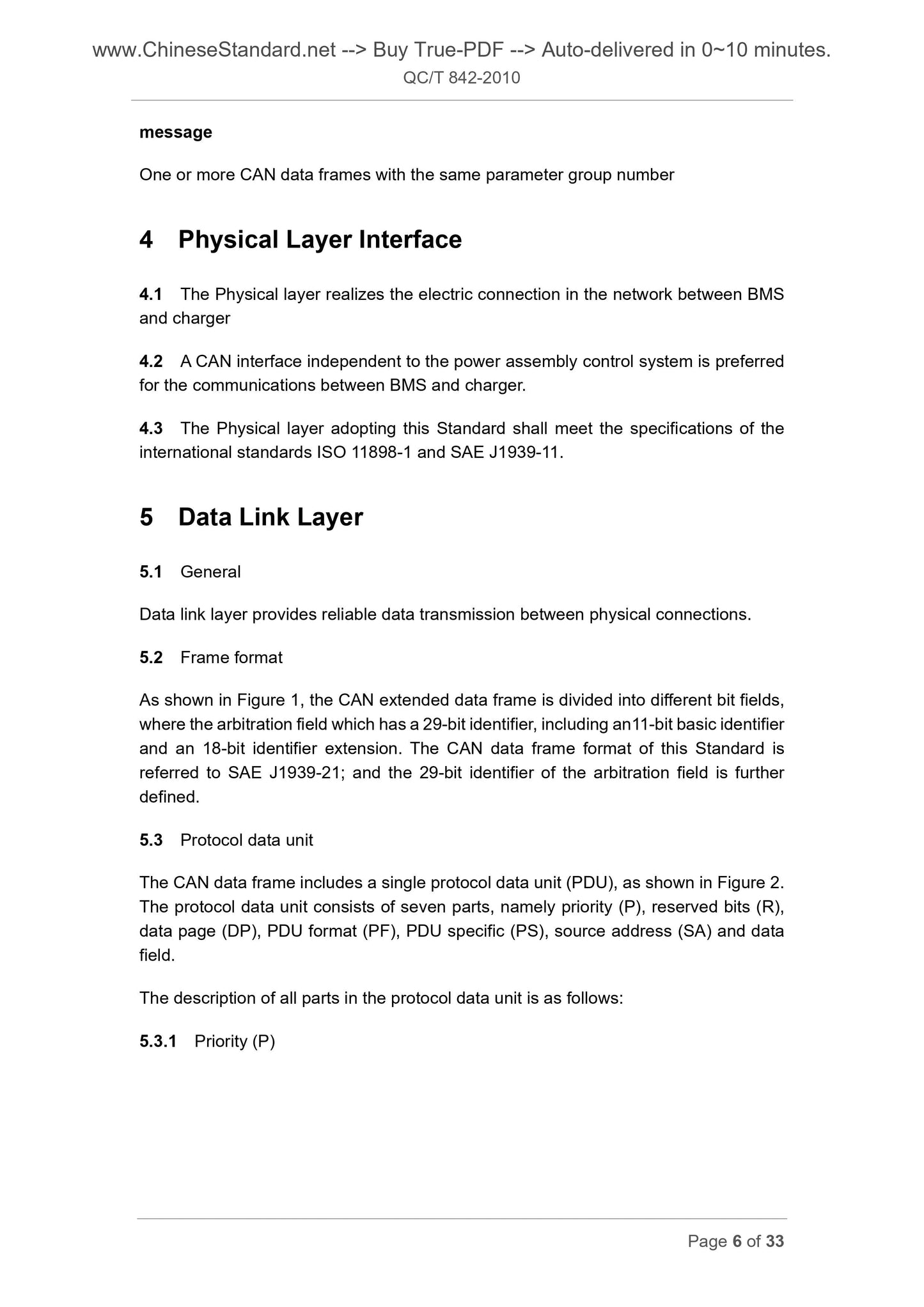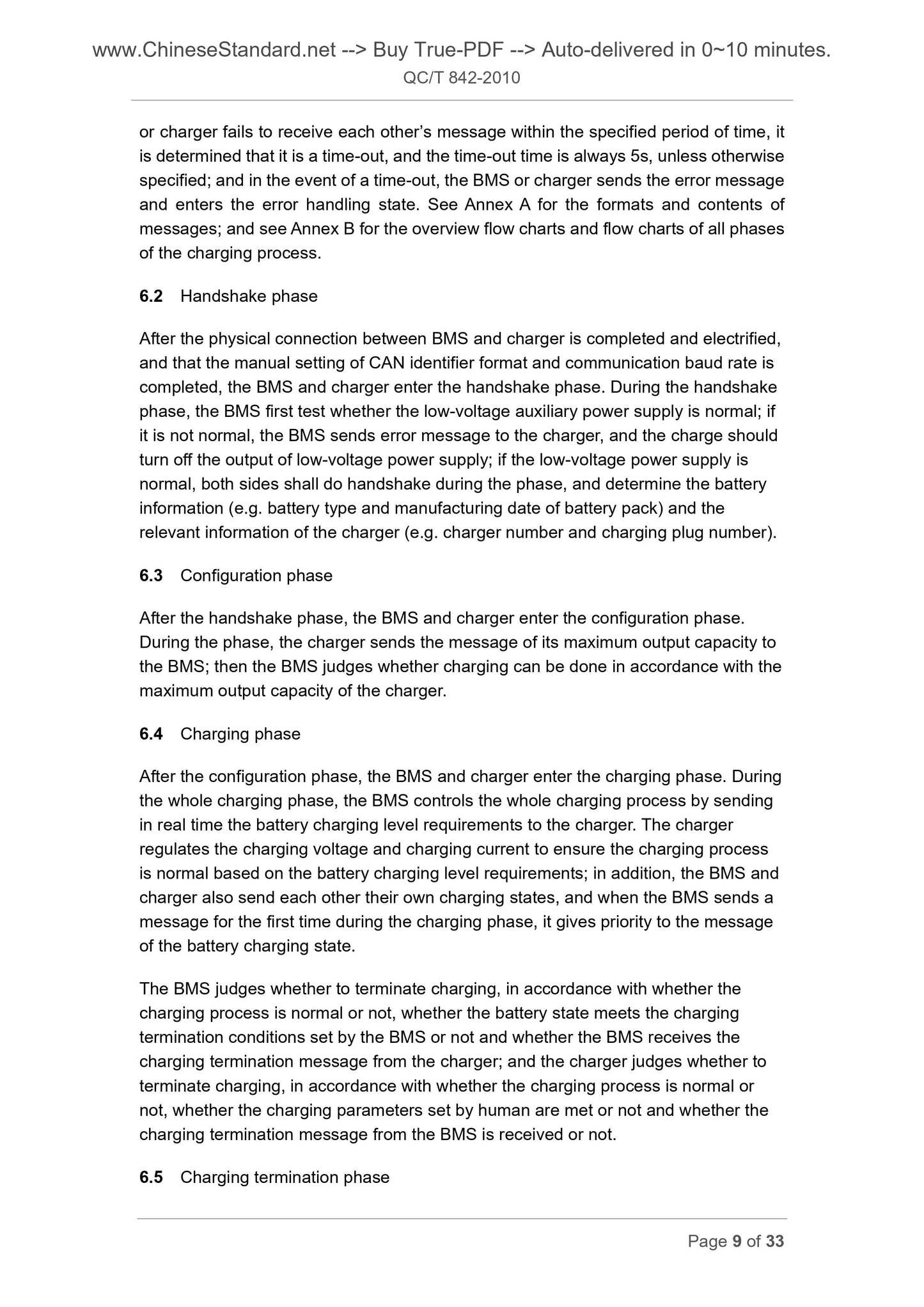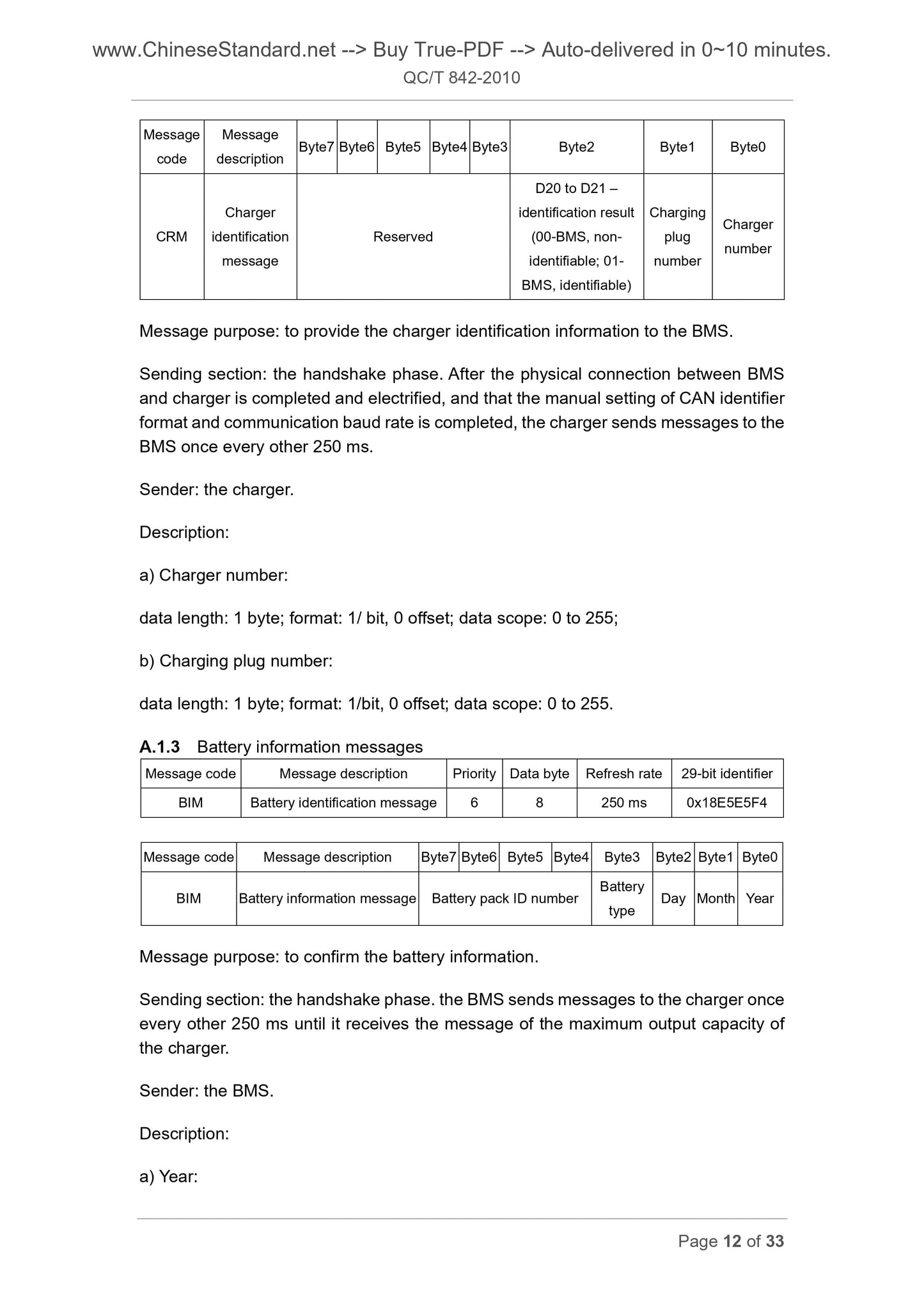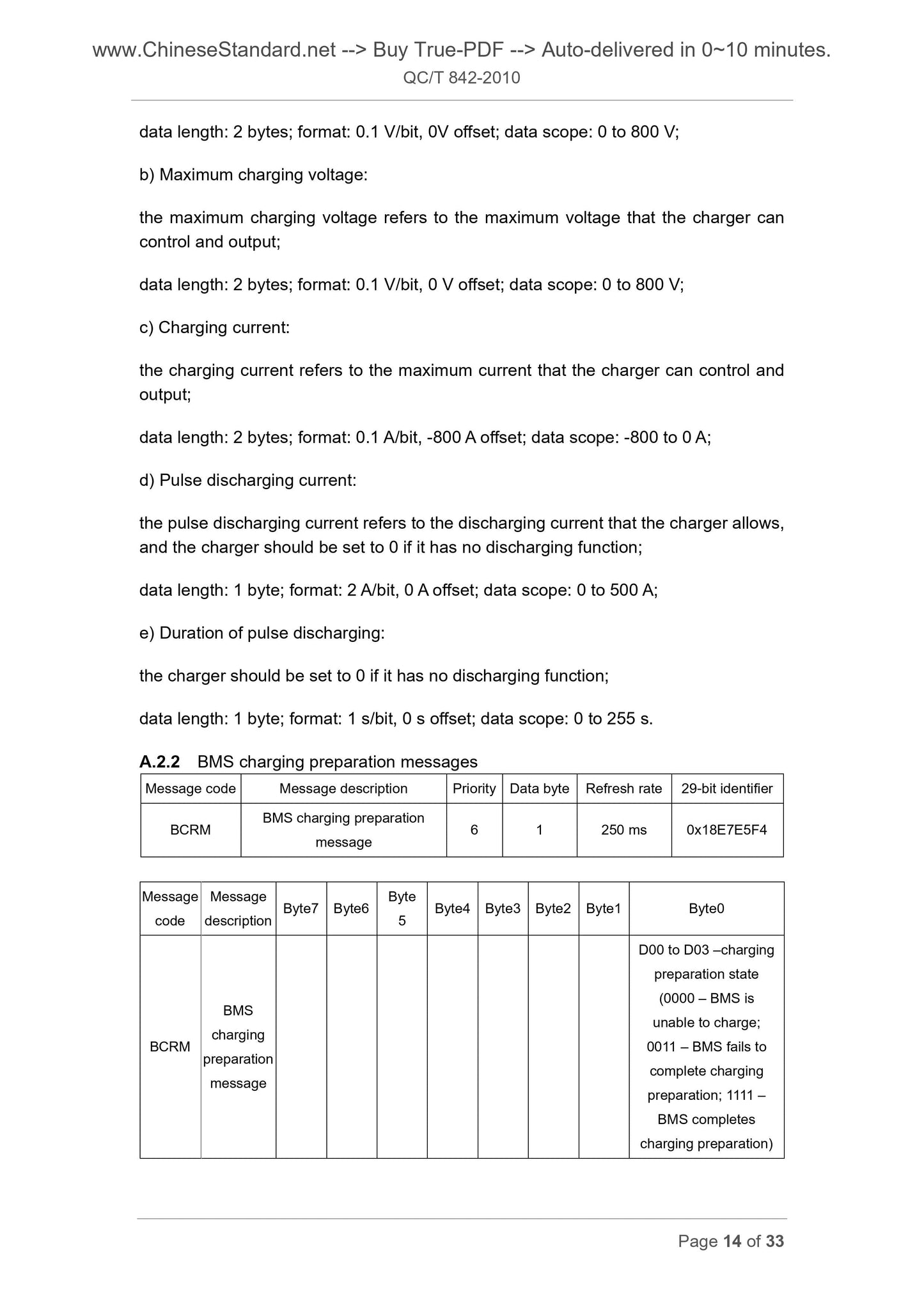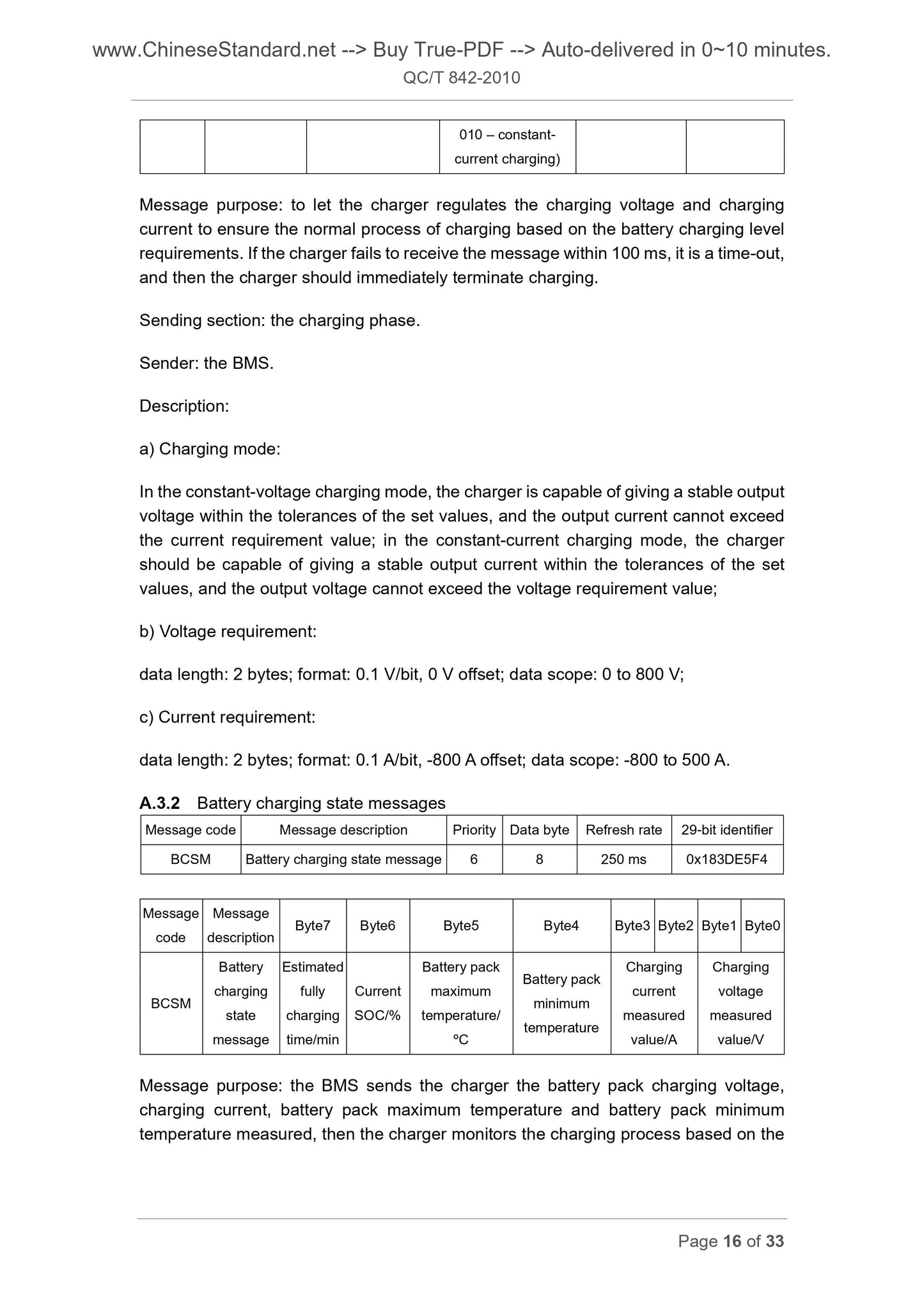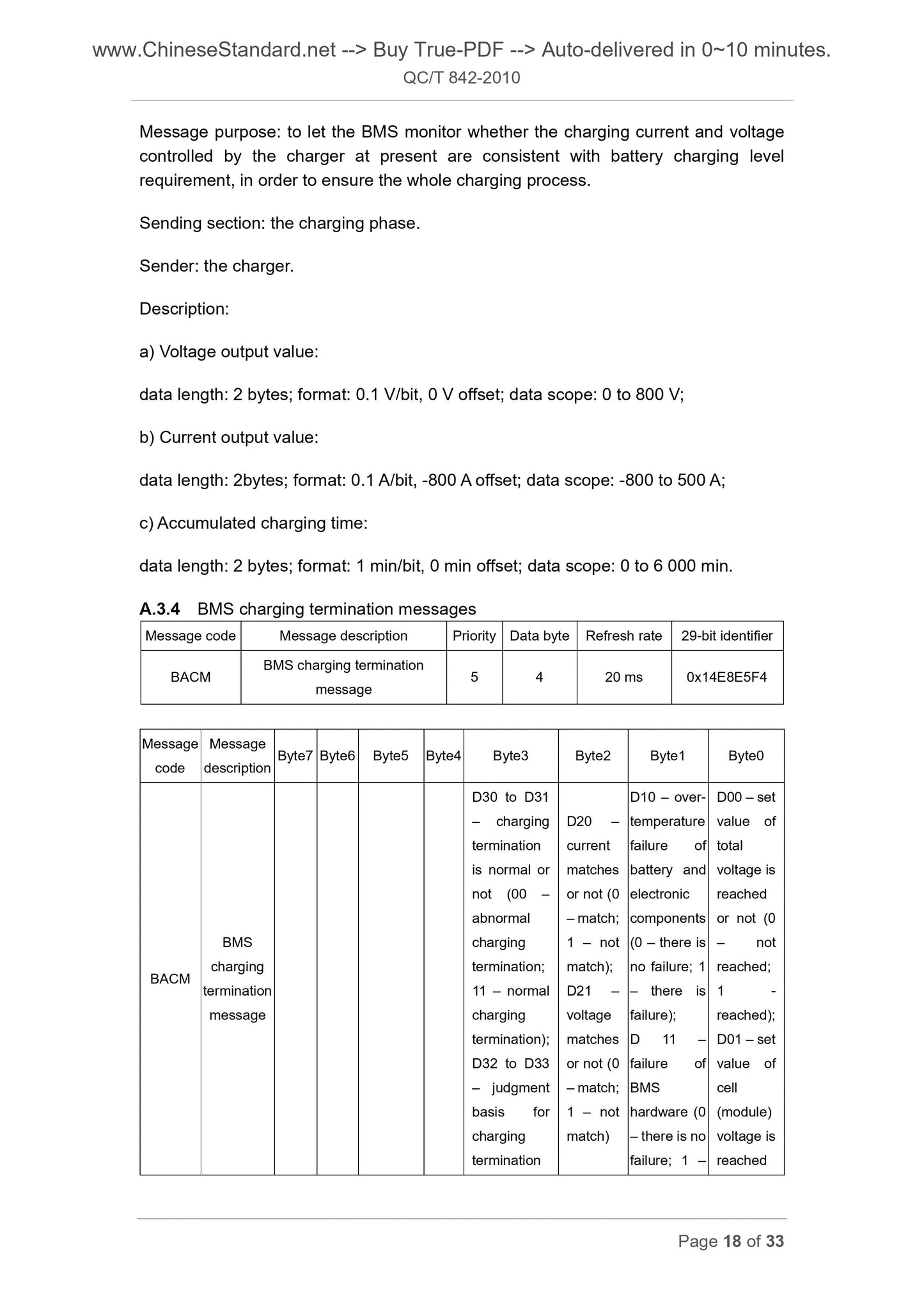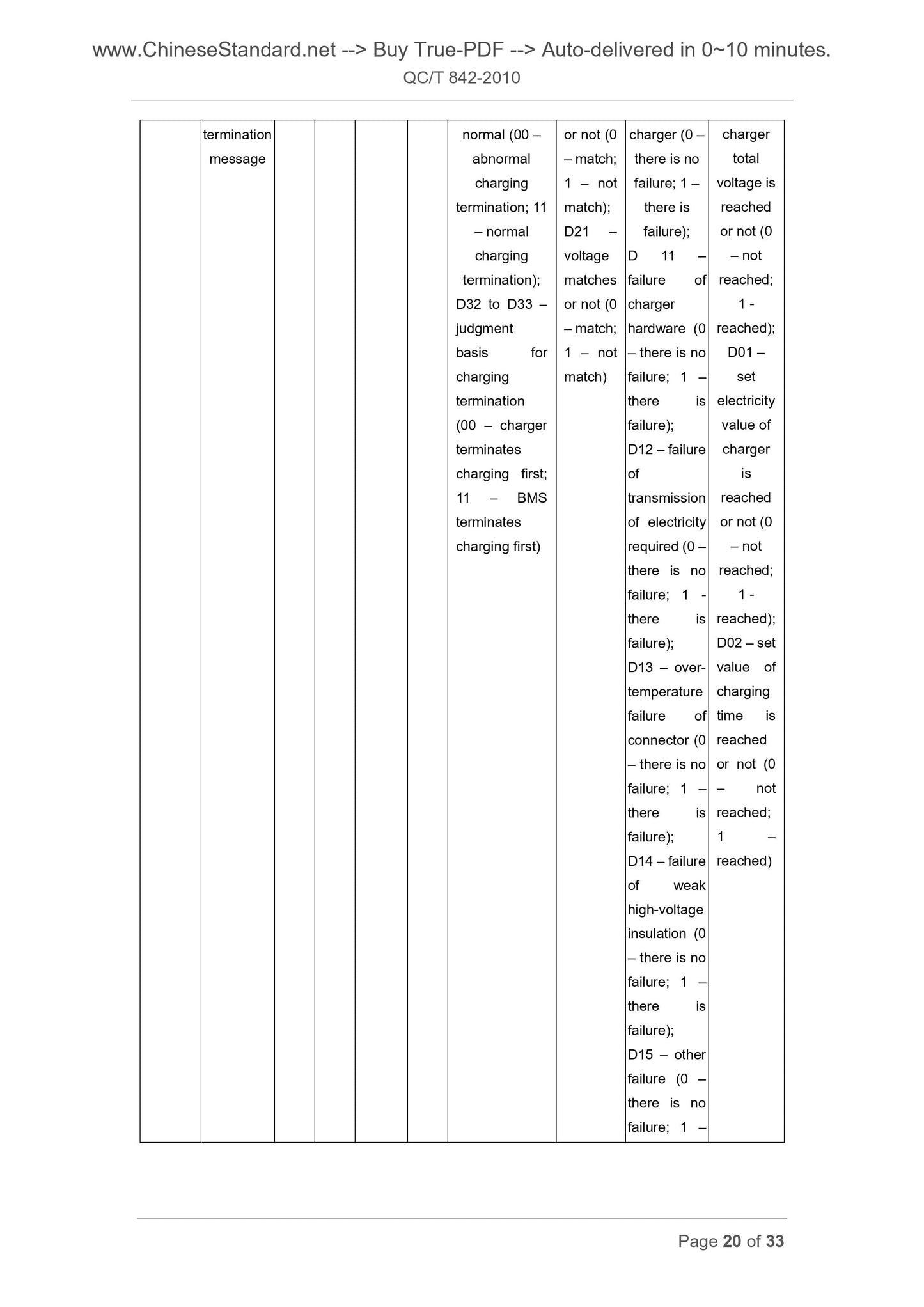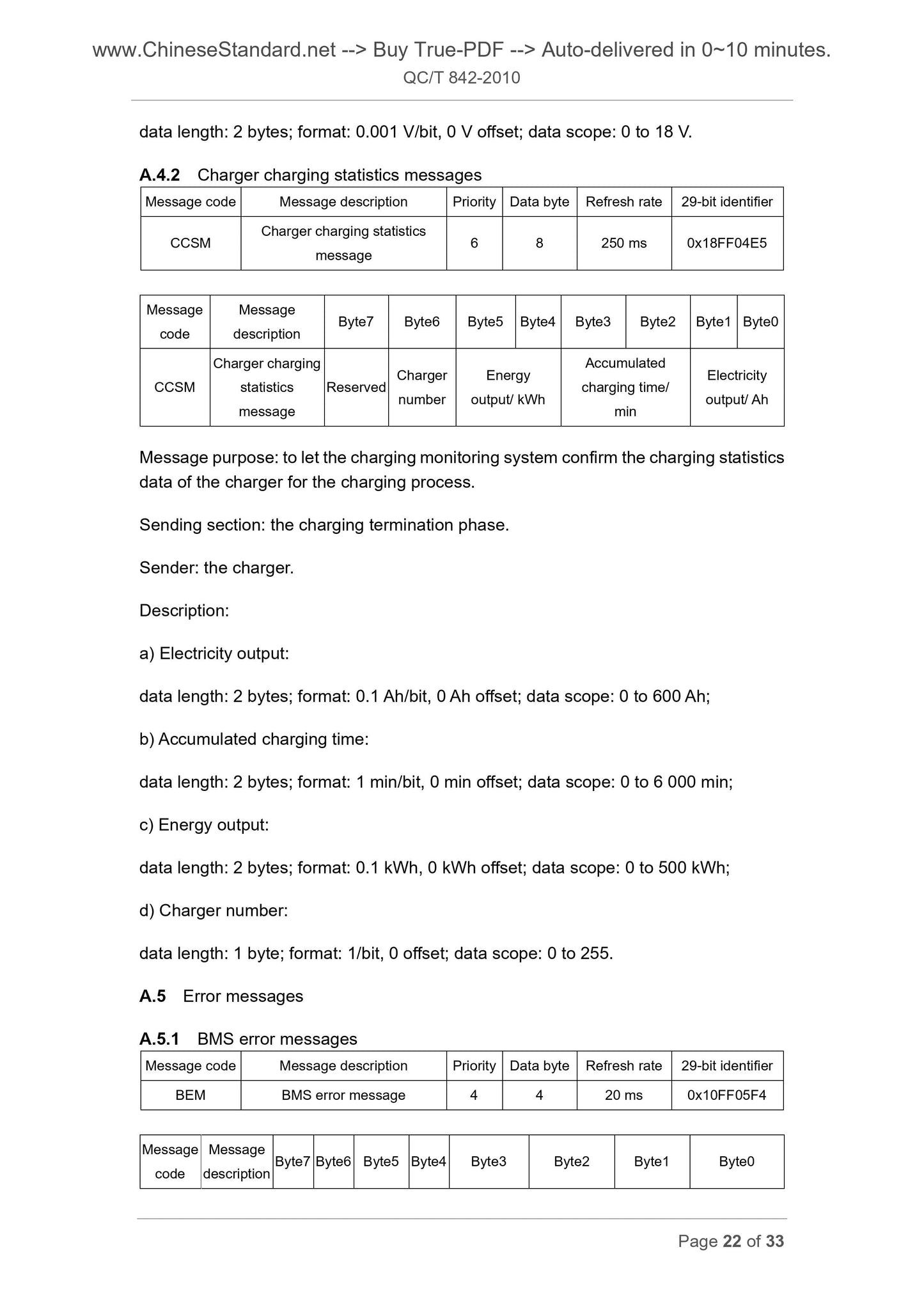1
/
of
12
www.ChineseStandard.us -- Field Test Asia Pte. Ltd.
QC/T 842-2010 English PDF (QC/T842-2010)
QC/T 842-2010 English PDF (QC/T842-2010)
Regular price
$105.00
Regular price
Sale price
$105.00
Unit price
/
per
Shipping calculated at checkout.
Couldn't load pickup availability
QC/T 842-2010: Communication protocols between battery management system and off-board charger for electric vehicles
Delivery: 9 seconds. Download (and Email) true-PDF + Invoice.Get Quotation: Click QC/T 842-2010 (Self-service in 1-minute)
Newer / historical versions: QC/T 842-2010
Preview True-PDF
Scope
This Standard specifies communication protocols between battery managementsystem (hereinafter referred to as BMS) and off-board charger (hereinafter referred to
as charger) for electric vehicles.
This Standard applies to off-board charging for electric vehicles.
CAN identifier of this Standard is 29 bits, and communication baud rate is 250 kbps,
but this Standard is not limited to 29-bit identifier and 250 kbps communication baud
rate. If other formats are used, their CAN identifier shall be made by reference to this
Standard.
Data transmission of this Standard is by the format of low bits transmitted first.
Negative current value represents charging; positive current value represents
discharging.
Basic Data
| Standard ID | QC/T 842-2010 (QC/T842-2010) |
| Description (Translated English) | Communication protocols between battery management system and off-board charger for electric vehicles |
| Sector / Industry | Automobile and Vehicle Industry Standard (Recommended) |
| Classification of Chinese Standard | T47 |
| Classification of International Standard | 43.080 |
| Word Count Estimation | 26,217 |
| Date of Issue | 2010-11-22 |
| Date of Implementation | 2011-03-01 |
| Quoted Standard | ISO 11898-1-2006; SAE J1939-11-2006; SAE J1939-21-2006 |
| Regulation (derived from) | MIIT (2010) No. 126 |
| Issuing agency(ies) | Ministry of Industry and Information Technology |
| Summary | This standard specifies the electric vehicle battery management system (referred to as BMS) and non-vehicle charger (referred charger) communication protocol between, This standard applies to electric vehicles, off-board charger, the standard CAN identifier is 29, the communication baud rate of 250kbps, but not limited to the 29 of the standard identifier and 250kbps communication baud rate, such as using other formats, you can refer to the standards of its CAN identifier. LSB first data transmission using standard transmission format. |
Share
